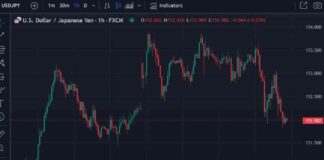Navigating ECB’s Rate Cuts with a Focus on Domestic Inflation
The European Central Bank (ECB) has been closely monitoring the recent declines in inflation across various parts of the Eurozone, with particular attention to domestic inflation rates. ECB Executive Board member Isabel Schnabel recently addressed these developments in a speech, describing them as “welcome” but also highlighting the challenges that monetary policy continues to face.
Schnabel noted that while headline inflation levels have decreased, the current level may not accurately reflect the true challenges that monetary policy is still up against. Domestic inflation, in particular, remains elevated at 4.4%, driven primarily by ongoing price pressures in the services sector. This sector has seen a stall in disinflation since last November, with services prices still rising at a significant pace of almost 5% on an annualized three-month-on-three-month basis.
Caution in Policy Approaches
As the ECB considers its policy options in response to these inflation trends, Schnabel emphasized the need for caution. While incoming data generally supports the ECB’s baseline outlook, there is uncertainty surrounding the impact of policy rates nearing the upper band of the neutral rate. Schnabel highlighted the importance of avoiding a mechanical approach to policy easing, instead advocating for a data-driven and analytical strategy to ensure that monetary policy does not inadvertently hinder disinflation efforts.
Guiding Principles for Monetary Policy
In navigating the complexities of domestic inflation and the broader economic landscape, Schnabel outlined several guiding principles for the ECB’s monetary policy decisions. First and foremost, she stressed the importance of flexibility and responsiveness to changing economic conditions. Monetary policy cannot be static or rigid; it must adapt to new information and evolving circumstances to remain effective.
Schnabel also underscored the significance of transparency and communication in shaping market expectations and maintaining credibility. Clear and consistent messaging from the ECB helps to guide market participants and anchor inflation expectations, which in turn influences actual inflation outcomes. By communicating its policy intentions clearly, the ECB can enhance the effectiveness of its monetary policy tools and achieve its desired economic outcomes.
Furthermore, Schnabel highlighted the need for a holistic approach to monetary policy that considers the interplay of various factors influencing inflation dynamics. In addition to domestic inflation trends, the ECB must take into account global economic conditions, exchange rate movements, and financial market developments when formulating its policy decisions. A comprehensive understanding of the interconnectedness of these factors is essential for effective policymaking and achieving the ECB’s inflation target.
Challenges Ahead
Looking ahead, Schnabel acknowledged the challenges that lie ahead for the ECB in navigating the current economic environment. While recent inflation declines may be a positive development in some respects, they also present new obstacles for monetary policy. Balancing the need to support economic growth and employment with the imperative of maintaining price stability is a delicate task that requires careful consideration and strategic decision-making.
One key challenge facing the ECB is the risk of deflation, or a sustained period of falling prices. Deflation can have detrimental effects on the economy, leading to lower consumer spending, decreased investment, and increased debt burdens. Preventing deflation and ensuring price stability are essential objectives for the ECB, requiring proactive and vigilant monetary policy actions.
Another challenge for the ECB is the potential impact of external factors on domestic inflation dynamics. Global economic conditions, trade tensions, and geopolitical uncertainties can all influence inflation trends in the Eurozone, complicating the ECB’s policy decisions. By closely monitoring these external developments and their potential effects on domestic inflation, the ECB can better anticipate and respond to changing economic conditions.
Conclusion
In conclusion, navigating the complexities of domestic inflation and guiding monetary policy in the current economic environment require a careful and strategic approach. ECB Executive Board member Isabel Schnabel’s recent speech underscores the importance of flexibility, transparency, and a holistic understanding of inflation dynamics in shaping the ECB’s policy decisions. By adhering to these guiding principles and remaining vigilant in the face of challenges, the ECB can effectively manage domestic inflation and support sustainable economic growth in the Eurozone.

















